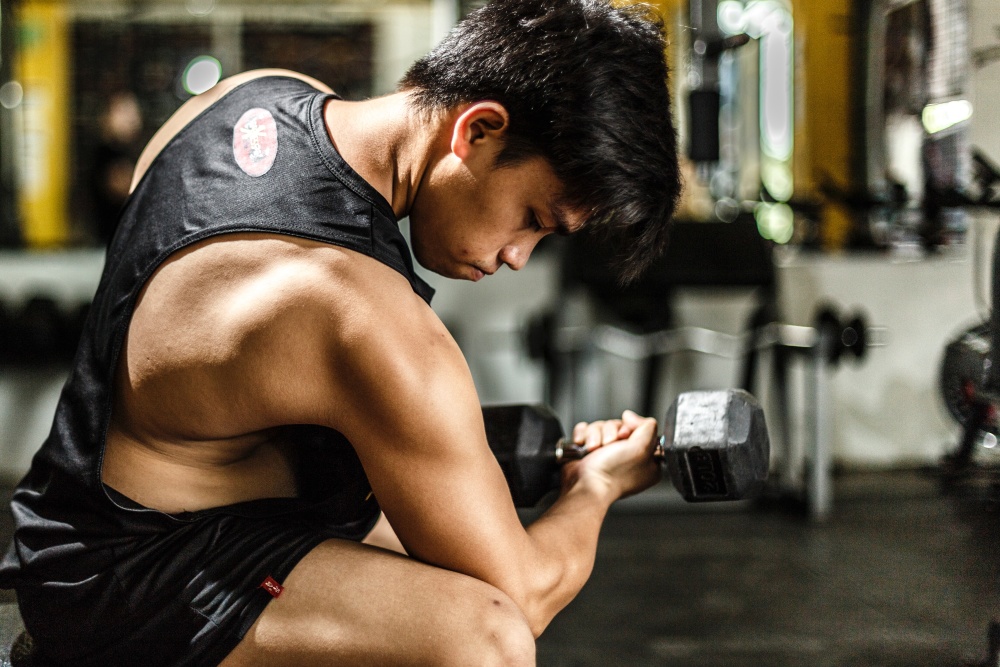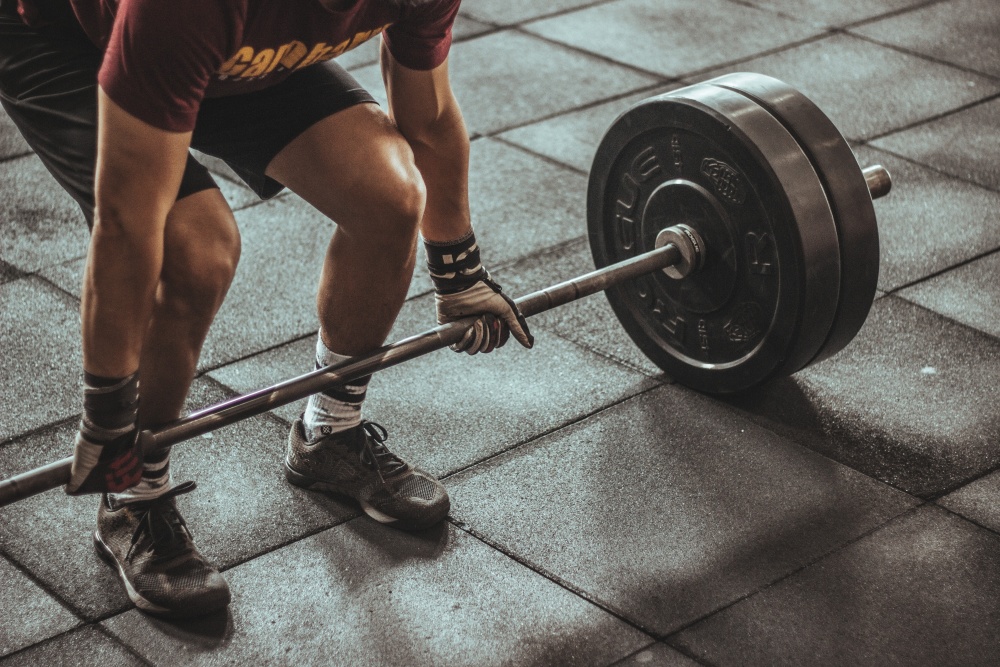Updated September 18, 2025
Fitness in Japan: A Comprehensive Guide to Japan's Gyms
Working out and staying fit is one of the best things we can do for our bodies — there’s no denying it.
However, working out is also one of the very few instances where we completely allow ourselves to be openly vulnerable. Between all the sweat, tears, and hard work, it’s hard to be as alert and aware of your surroundings as you want to be in such a public space.
Besides, it’s one thing if you were already a gym rat in your previous country of residence, but if you’re just starting out, going to a gym in a new country can feel extra daunting as a beginner. This is why, as a foreigner in Japan, you may feel uneasy or shy away from going to the gym or working out in public for the first time.
While a workout is a workout no matter where you travel to, the culture of how you work out and use certain types of equipment and facilities can differ depending on the country’s workout or gym culture. This is why, today, we’ll talk about the gym culture in Japan and which gyms are the best for foreigners.
I’ll also explain the etiquette for going to the gym in Japan and even share some useful Japanese vocabulary so that you’ll be prepared for your first gym visit.
First, let’s take a look at the types of gyms you’ll find in Japan.
Types of Gyms in Japan: What You Need to Know
If you’re a gym newbie in Japan, what you first need to learn is that there are mainly two types of gyms in Japan: public gyms and private gyms. Here’s what you need to know.
Public Gyms
Essentially, public gyms are establishments that are owned and run by local municipalities. Unlike private gyms, these establishments don’t require memberships. So, you can come and go as you please without having to commit to a long-term plan and only pay for each visit.
Public gyms are much cheaper compared to private ones. You can even find ones where the entry fees are as low as 400 JPY, which is great if you want to stay healthy and don’t have much money to spare.
As expected, public gyms are usually very busy, so some equipment may not always be available. Another downside of public gyms is that they’re not the best fit for foreigners. If you speak Japanese, you most likely won’t have any problems, but English support is rarely available at these establishments.
Still, if you’re looking for public gyms around you, you can find them by searching for “health centers,” “gymnasiums,” or “sports centers” on your map application.
Private Gyms
Unlike public gyms, private gyms are privately owned and run, and as expected, they offer better quality.
Of course, these gyms are more expensive than public ones, and you’ll most likely need a membership to use the facility as most don’t offer one-time visits. In addition, as public gyms are widely available in Japan, private gyms are seen as more of a luxury compared to the U.S. or European countries, so they tend to be more expensive.
On the other hand, apart from offering better equipment, private gyms are also less crowded (depending on the location) and may offer specific courses and classes you can take, such as yoga, pilates, and spinning classes.
Best Japanese Gyms for Foreigners: Top Gyms in Tokyo
Now that you know the difference between a public and a private gym, let’s now take a look at some of the best foreigner-friendly Japanese gyms. While a few of these options are only available in Tokyo, some of the suggestions below are chains, which means that you can also find them in other cities in Japan.
Gold’s Gym
Gold’s Gym is a well-known private American chain of fitness centers, and the branches in Japan are largely frequented by foreigners.
Like many private gyms, Gold’s requires membership. Prices vary depending on the location, but you can become a member for a monthly fee of 7,700–11,000 JPY. You can also get an afternoon membership for cheaper, but it only gives you access to the gym between 12:00 and 17:00.
Keep in mind that a registration fee of 5,500 JPY will also be charged when you sign up.
Their most popular branch in Japan, which is the one in Harajuku, is open 24 hours, which is quite convenient for working individuals. They have plenty of weight training and cardio equipment, as well as a training area reserved for women only. Of course, usual facilities such as toilets, showers, and lockers are available at all locations.
Gold’s Gym usually has English-speaking staff at all of their locations, and some, like the one in Tokyo, even offer fully-English contracts when signing up.
Anytime Fitness
Anytime Fitness is another private chain, and there’s a reason why they’re called “anytime” — they’re open 24/7.
There are over 600 locations of Anytime Fitness throughout Japan, and the chain also exists in other countries, so you might already be familiar with it. Moreover, if you were a member in any other country, your membership would still be valid in all Japanese locations.
Just like other fitness chains, prices change depending on the location at Anytime Fitness as well. That being said, you can expect to pay approximately 7,500 JPY for a monthly membership.
Each facility of Anytime Fitness comes equipped with the usual weight training equipment, as well as cardio and strength machines.
While the 24/7 availability and the ability to work out at any location are excellent, English support may not be as readily available at all locations. However, it’s safe to say that you at least won’t have trouble in the Tokyo locations, of which there are over 160.
Club 360
Club 360 may be a smaller operation compared to the fitness chains I covered so far, but their facilities are just as well equipped, and they even offer personal training programs.
Their two branches, which are in one of the most foreigner-friendly districts of Tokyo, Azabu, offer private training sessions, as well as group training and various classes. In fact, the sports club even has programs tailored for kids. This means that you can sign up as a family and bring your kids with you when you want to work out.
In addition to fitness classes, Club 360 also offers wellness services such as massages and physiotherapy to go along with your workouts. You can even have a nutrition plan made just for you, as there are coaches available for that as well. If you want to join but are not entirely sure, you can get a free personal training consultation.
That said, the biggest draw of Club 360 is that you don’t have to get a membership. You can also purchase singular sessions, which cost 11,500 JPY for one-on-one training. You can also choose to go to group classes, which cost 29,900 JPY for the whole month.
There are also five session packs for 51,250 JPY and 10 session packs for 99,000 JPY. Both locations are equipped with the latest workout equipment, so you’ll definitely be getting your money’s worth here.

F45 Training
F45 Training is another private gym that has locations all over the world, including Japan.
Unlike the other gyms I mentioned, F45 offers a different workout style. Mainly focused on functional high-intensity training, the sessions are done in a group and usually last about 45 minutes. It can be described as similar to the popular CrossFit workouts, which involve working out many muscle groups all at once using weight training and high-intensity sets.
Due to it being a foreign gym, you’ll see many foreigners frequenting F45 Training locations, especially in Tokyo, such as the one in Minato City. Keep in mind, however, that workouts at F45 are pretty intense, so if you’re content casually scrolling on your phone while walking the treadmill, F45 may not be for you.
With that in mind, if you want to get the most out of your gym time, this is your best bet. As expected, the prices here are a bit higher compared to regular gyms, with memberships starting from 20,000 JPY monthly.
Konami Sports Club
Just like many others on this list, Konami Sports Club is also a major fitness chain. Especially in Tokyo, you’re almost always guaranteed to be in the vicinity of a Konami Sports Club location.
One thing that sets Konami apart from other private gyms is that you don’t have to have a membership to use the facilities. While membership options are available, you can also just drop by and pay for your workout at each visit.
As expected, prices at Konami Sports Club vary depending on the location, but each visit usually costs somewhere between 2,000 JPY and 3,000 JPY.
The equipment availability also depends on the location, but you won’t have much trouble finding what you need in general unless you have a very specific workout routine. In addition, even if you forget to bring a towel, swimming cap, or even your shoes, Konami has you covered, as you can easily rent these at any location for a small fee.
Sarugaku Training Gym
Unlike what I’ve covered so far, Sarugaku Training Gym is a public gym. However, it’s one of the best public gyms you can find out there.
Due to its popularity and central location (Shibuya City), the crowd at Sarugaku Gym is quite mixed. This means that it’s one of your best bets for public gyms in Japan if you’re a foreigner.
Unfortunately, there’s a caveat if you want to use this gym, which is the requirement of either residing, studying, or working in the Shibuya ward.
As it’s a public gym, Sarugaku Gym doesn’t require a membership. You can just walk in, work out, and pay for the day. The daily prices are around 400 JPY, which is rather low in comparison to the alternatives.
You may not exactly find the most cutting-edge equipment, and the equipment availability is somewhat limited compared to private gyms. However, with the weights and cardio equipment that’s available, it’s still totally possible to get a functional workout done here.
Local Community Center Gyms
If you’re looking for a more affordable option, going to your local community center gyms is undoubtedly your most affordable option.
While these may not be as well-equipped, either, you can still work out without a problem at your local ward’s gym. If you check online, you’re almost guaranteed to find one near you, as they are quite common in urban areas.
As they’re public gyms, much like Sarugaku Gym, these establishments also don’t require memberships. You can pay for the whole day and train to your heart’s content. The daily prices usually range from 250 to 400 JPY, which depends on the location.
In addition to using the regular gym equipment, if you’re looking for group classes, ward gyms usually have a variety of group classes you can take at no additional charge. While the classes offered depend on the location of the gym, you’re likely to find basic classes like Zumba and aerobics at most locations.
Some ward gyms also have pools, which you can use at an extra cost. However, keep in mind that your tattoos will need to be covered here as well, which will expand on in a bit.
Navigating a Gym in Japan: Japanese Gym Etiquette
As Japanese culture is quite unique and vastly different from that of the U.S. or Europe, if you don’t know certain rules, you may have difficulty adapting and struggle to understand the reason behind some common practices.
Besides, I mentioned this in my post on whether Japanese people speak English or not, but when it comes to speaking English, gyms in Japan might not be the most accommodating place. So, if you’re unable to figure out the rules on your own, and there are no English signs, you might end up breaking the rules without even knowing it.
This is why it’s essential to know the basic rules for working out in the gym as a foreigner if you don’t want to stick out like a sore thumb on your first gym outing.
So, let’s now look at some common Japanese gym etiquette and explain the reasoning behind each one.
Don’t Forget Your ID
Before you zip up your gym bag, make sure that you have a valid ID in there with you. Nearly all gyms in Japan will require you to show an ID in order to use their facilities.
This may sound strange, but if you’ve lived in Japan long enough, it won’t come as a surprise, as identifying yourself is pretty common for memberships and using public facilities in Japan.
Make sure to have an ID card, a passport, or your residence card with you to avoid getting rejected. Keep in mind that some places may allow online registration, though, so make sure to check the gym’s website before you go if you want to handle everything beforehand.
Cover Up Your Tattoos
This may sound strange, but the culture around tattoos is a bit complicated in Japan.
Generally speaking, tattoos aren’t really well received in Japan by the general public. You may have stumbled upon this if you’ve visited public pools and hot springs, but some establishments flat-out prohibit entering the establishment with a visible tattoo.
This is mainly because tattoos are associated with the Yakuza (the Japanese mafia equivalent), and the appearance of tattoos may cause people to feel unsettled or even threatened.
Still, each gym has a different policy. Some may completely restrict you from becoming a member if you have too many visible tattoos, and some may only require you to cover them up while working out — it all depends on the establishment.

No Super Sets, No Equipment Hopping
Unlike what you might see in gyms in the U.S. or Europe, switching equipment for “super sets” is not allowed in most gyms in Japan. Once you start using a machine or weights, you’re expected to complete all of your sets and then leave the equipment for the next person.
This, of course, also means no cutting in between someone else’s sets. In addition, some gyms may even require you to reserve the pieces of equipment you want to use beforehand. I recommend planning your workouts accordingly.
Take Your “Outside Shoes” Off
This rule doesn’t mean that you’ll have to work out barefoot, but Japanese gyms have a strict policy of not allowing outdoor shoes inside the establishment.
If you’re planning on working out in Japan, I recommend investing in a pair of gym shoes when you go shopping for gym clothes. When you arrive at the gym, you’re expected to take off your outside shoes and put on your workout shoes before you even enter the locker room.
In addition, as it’s pretty common in Japan, some gyms even restrict members from using the toilets with their shoes on. So, make sure to use the toilet slippers provided by the establishment.
While we’re on hygiene, even though this applies to all gyms in the world, I should remind you that bringing a small towel with you for your workout is also a must.
No Photos or Videos Allowed Inside
In the age of gym mirror selfies, you may be tempted to take your phone out and take a picture of the results of your hard work while your skin is still glimmering with sweat. However, taking photos and videos inside the gym is usually not allowed in Japan.
In fact, most gyms completely ban the use of mobile phones while working out, so you may be asked to leave your phone in your locker altogether. If listening to music on your phone while you work out is important to you, I strongly recommend checking your gym’s rules before you become a member.
Bonus Tip: You’ll Probably Need a Japanese Bank Account
As the title says, this is more of a tip than a rule, but if you want to become a gym member in Japan, you need to keep in mind that nearly all gyms require a Japanese bank account or a credit card to set up automatic monthly withdrawals.
If you don’t have a Japanese bank account yet and need help or if you want to find out about how the banking system in Japan works, I’ve prepared a comprehensive guide to banking in Japan that you can check out after this post.
Useful Gym-Related Japanese Vocabulary
Now you know pretty much all there is to know about Japanese gyms, and you’re ready to go to your first workout in Japan. However, while you can find English support in most of the gyms I featured in this post, you may still need some Japanese gym-related vocab to understand the signs or communicate with the employees at the gym.
Here are some useful phrases for when you visit a gym in Japan:
I have a membership: Kaiin tōroku o shite imasu (会員登録をしています)
I don’t have a membership: Kaiin tōroku wa shite imasen (会員登録はしていません)
I’d like to sign up for a gym membership: Jimu no kaiin ni tōroku shitaidesu (ジム会員に登録したいです)
How much does a membership cost?: Kaihi wa ikura desu ka? (会費はいくらですか?)
How can I cancel my gym membership?: Taikai suru baai no tetsuzuki o oshiete kudasai. (退会する場合の手続きを教えてください?)
Can I get a free trial?: Muryō taiken wa dekimasu ka? (無料体験はできますか?)
Is it okay if I use this?: Kore o tsukatte mo daijōbudesuka (これを使っても大丈夫ですか)
Work out: Torēningu (トレーニング)
Exercise: Undo (運動)
Weight training: Weitotorēningu (ウェイトトレーニング)
Bench press: Benchi puresu (ベンチプレス)
Dumbbell: Danberu (ダンベル)
Treadmill: Ranningu Mashiin (ランニングマシン)
Frequently Asked Questions About Japanese Gyms

Before I close out today’s post, let’s take a quick look at some of the most frequently asked questions about gyms in Japan and provide short, to-the-point answers.
How to Find an English Gym in Japan?
If you’re a foreigner who doesn’t speak Japanese at all, you can check to see if there are any branches of international fitness chains near you. These usually have good English support and are frequented by foreigners.
You can also refer to my list above and check if there are any Gold’s Gym of F45 Training locations near you.
What Are The Top Gyms in Tokyo For Foreigners?
In Tokyo, you can go to:
Anytime Fitness in Minato Ward,
Gold’s Gym in Harajuku,
Club 360 in Minato Ward,
Sarugaku Gym (Public) in Shibuya Ward, or
F45 Training in Minato Ward.
All of these are quite popular locations and are quite accommodating to all customers.
Is Gym Etiquette in Japan Different From the West?
While working out is universal, you may need to become more familiar with some of the gym rules in Japan. Here are a few you mainly need to be aware of:
You’ll need proof of ID when signing up,
You need to cover up your tattoos where visible,
No “outside shoes” in the locker room,
No photos and videos — so no gym selfies.
Are Gyms Expensive in Japan?
Much like in any other place, there are both expensive and affordable gyms in Japan. There are private ones, which tend to be more expensive and require a membership, and there are public ones, which are much more affordable and don’t require memberships. Since you can pay per visit at public gyms, these are the most affordable options out there.
Get Job Alerts
Sign up for our newsletter to get hand-picked tech jobs in Japan – straight to your inbox.








